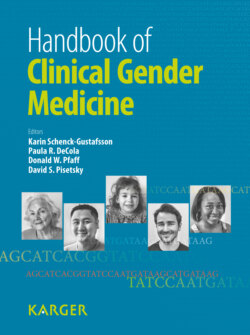Читать книгу Handbook of Clinical Gender Medicine - Группа авторов - Страница 99
Treatment
ОглавлениеThere are currently no published treatment options aimed at lowering AL levels. Nevertheless, many therapeutic options could be implemented based on the vast array of antecedents associated with AL and its clinical repercussions. In the only analyses of unaccountable changes in AL levels in the MacArthur cohort over the span of 2-5 years, Karlamangla et al. [17] showed that deceases in AL were significantly related to reductions in all-cause mortality regardless of one’s sex.
Importantly, there are critical periods to identify and prevent individuals from developing further AL and subsequent disordered, diseased, and deceased endpoints. Population-based analysis using the National Health and Nutrition Examination Survey (NHANES), with over 22,000 participants, has shown that AL steadily increases with age up through the 20s to 60s and then plateaus throughout the 60s to 90s during the period of greatest mortality risk [18].
From the perspectives of the life cycle and AL, this situation suggests decade-long windows of opportunity to intervene before individuals succumb to disease and death. In another NHANES analysis using approximately 15,000 middle-aged and older adults, age attenuated the effects of poverty over time; however, those with high AL had life expectancies 6 years shorter than those at low biological risk with similar poverty status and matched for sex [19]. AL is therefore clinically meaningful.
